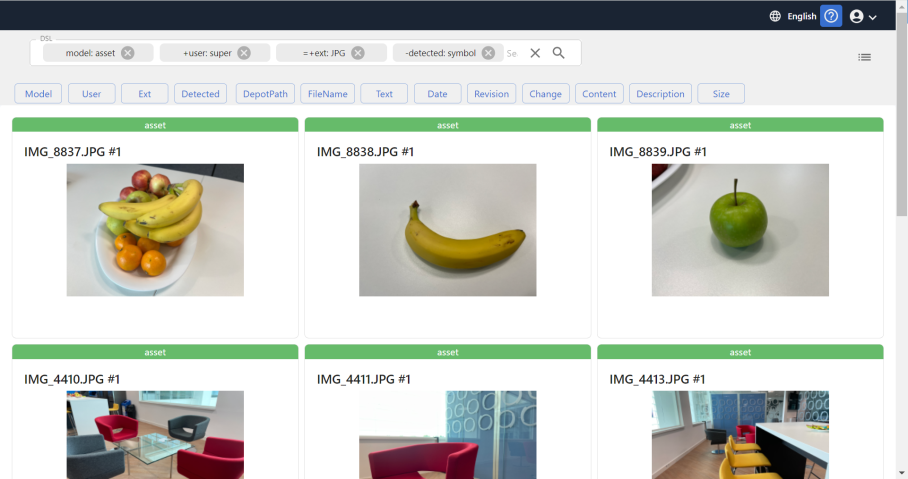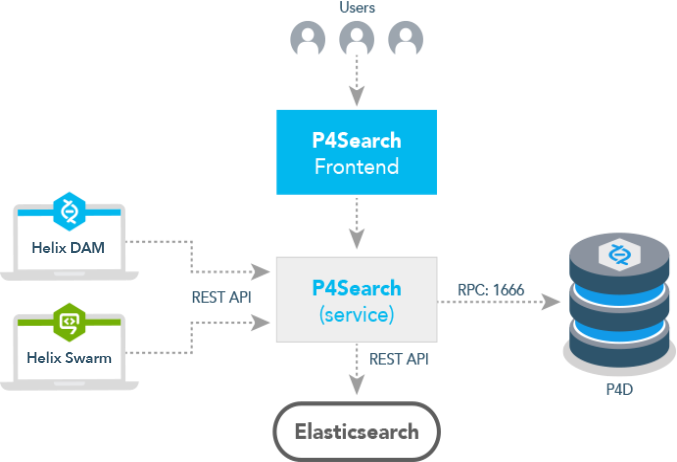Overview
This section describes the basics of Helix Search.
Helix Search web UI
The Helix Search web User Interface (UI) enables you search submitted changes, file revisions, and file content in your Helix Core Server.
For information about using the web UI, see Access the web UI.

Helix Search API
Helix Core Search API (Helix Search) is a REST service providing an API to support Swarm and P4V. The service needs a connection to Elasticsearch and a Helix Core Server.
This document will guide you through installing, configuring, and using the Helix Search web UI and API endpoints. Helix Search also supports the legacy API endpoints used by earlier versions of Helix Search (Apache Solr). It assumes that you have knowledge of Helix Server and REST APIs.
Example usage:
-
Extend standard Swarm searches to search file content and changelist description by using Helix Search.
System diagram

Perforce terminology
Definitions for the Perforce terms used in this documentation are:
- Helix Core Server: also referred to as P4D and Helix Server: the program that manages file revisions.
- Depot: the central repository where file revisions are stored and managed by Helix Server.
- Workspace: the area on your computer where you work with your copies of files and directories that are managed by Helix Server.
- Changelist: a group of files, with a description explaining how you have changed them (for example,"New process added for the Alpha system"). Changelists are assigned numbers by the Helix Server so you can track them. Changelists enable you to group related files and submit
 To send a pending changelist from the client workspace to the depot. them together.
To send a pending changelist from the client workspace to the depot. them together.
Known limitations
For the following admin related tasks, use depot syntax from the command line. Do not use local syntax path.
-
Obliterate a file on a Windows client.
-
Set a file attribute on a Windows client.






